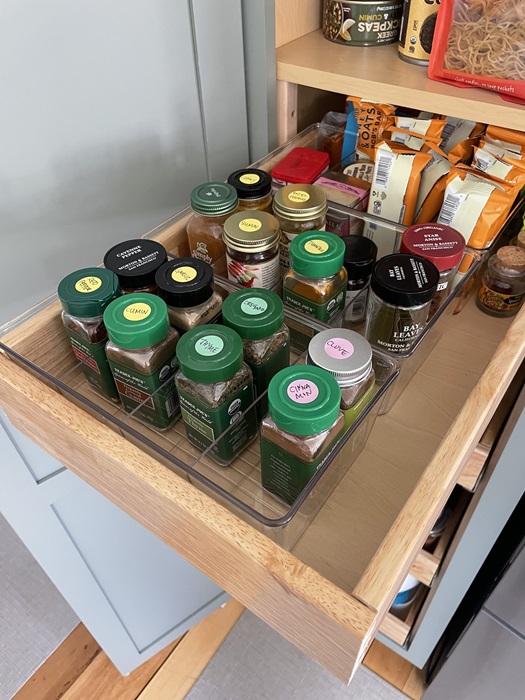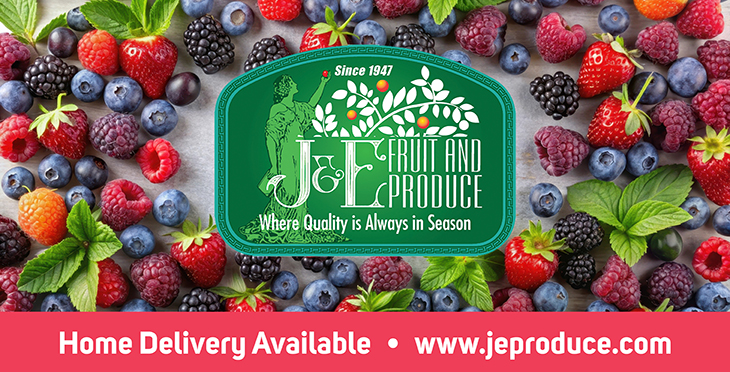I live in one of those 1800s Cape houses that shows its age with an absolute lack of repositories for the stuff of life, save for a solitary cupboard tucked under the staircase. So, when we decided to revamp our kitchen, finding clever storage solutions was a top priority. The new pantry is a slim cabinet with four 12-inch-wide pullout shelves and a fixed upper shelf — more than we had before — but we were still playing a daily game of dinnertime Jenga.
To bring order to the chaos, I picked up a set of lidded clear containers that fit the shelves perfectly. Now, instead of rummaging through a hoard of bags and boxes, we can easily find what we have. But that triumph was short-lived, because the dry goods reorganization only highlighted the mess that was our spice shelf.

Attempts to organize left me wondering what to keep and what to toss. And why on Earth do I have two jars each of garlic powder and cinnamon? I called Heather Bailey. She is the owner of The Optimal Kitchen in Orleans and offers cooking classes. I knew I could trust her to give me a well-seasoned opinion on those questions.
“People change houses with spices!” Bailey says. “This is something I talk about in my classes: Do not move with spices. Get rid of them.” She adds that most last only about six months before losing potency. Which is one reason it makes so much sense to buy small quantities as you need them from places like Orleans Whole Food Store, which has a bulk counter for organic spices from Frontier Co-op. She also likes the fact that at Atlantic Spice Company in North Truro they print the country of origin on their bulk products, so you can better research their quality.
“There is no point in ever buying something silly like pumpkin pie spice,” says Bailey, who recommends that home bakers stock cinnamon, nutmeg, and clove. “But something like garam masala, which is a blend, has cardamom that people might not buy alone.”
I shamefully admit I often admire the uber-organized pantries I see on social media. But Julie Brooks, whose Brewster-based business is Peaceful Place Home Organizers, encourages a more realistic approach. She says “overdecanting” is a mistake. Just use the original containers unless they do not fit your storage area, she says. That’s when it’s worth transferring spices to smaller jars.
“Designate a space close to the stove for the 10 most frequently used spices — either a cabinet or a drawer,” says Brooks. “Keep them in an open-topped bin if storing in a cabinet. If storing in a drawer, buy a spice liner to keep them in neat rows.”
I started with 32 jars and tins, way more than her suggested 10. Dupes were easy to remove. Then, I made some tough calls. Anything that I could not remember purchasing went into the compost. Taking Bailey’s advice, I eliminated basic blends, but Ras el hanout made the cut. My stash is now down to 16 jars.
Never satisfied, I am already eyeing my next organization project: the abyss of canned goods on the bottom shelf.



